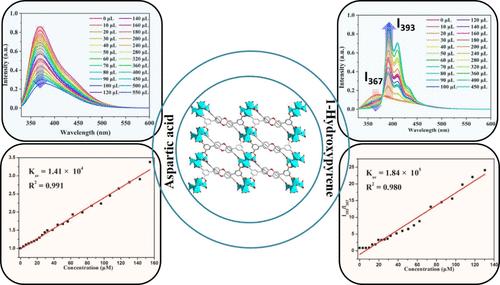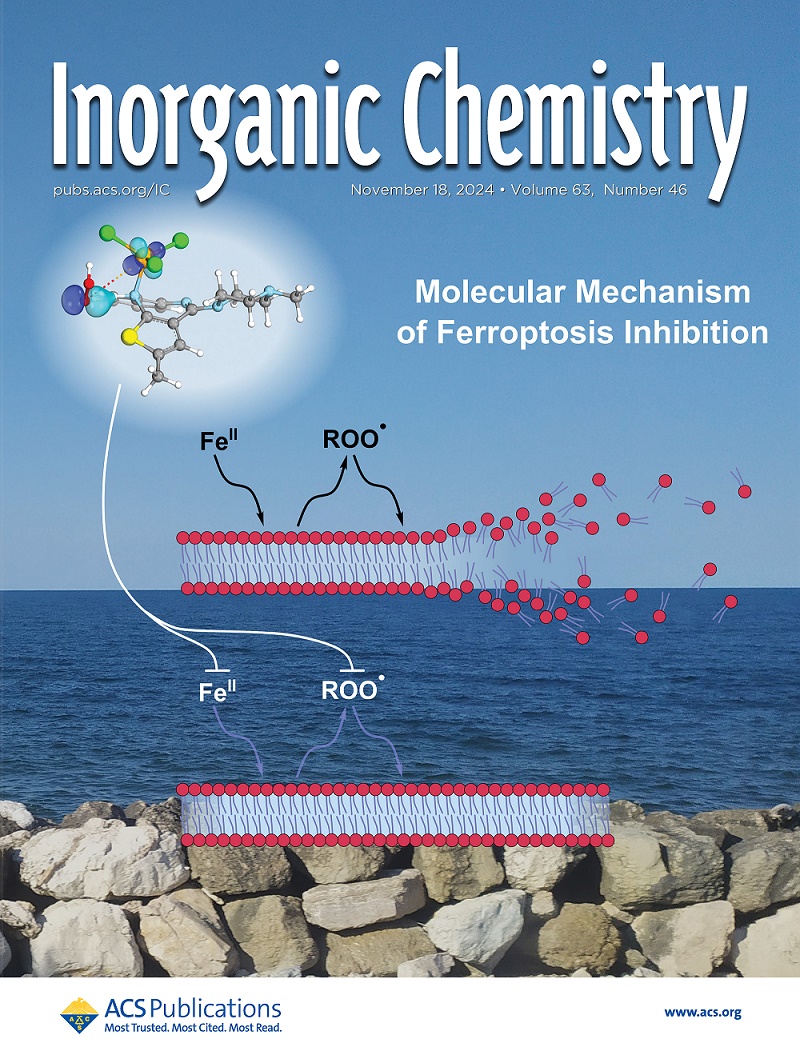Evaluation of the Potential of a Ratiometric Fluorescence Sensor for Sensitively Recognizing 1-Hydroxypyrene in Real Urine Samples Based on a Stable Zn-MOF
IF 4.3
2区 化学
Q1 CHEMISTRY, INORGANIC & NUCLEAR
引用次数: 0
Abstract
In the work, a 3D Zn-based MOF, [CH3(NH2)2][Zn2(obdb)(OH)]·DMF (compound 1) has been formed successfully through the self-assembly of Zn(II) ion and organic linker H4obdb (4′,4‴-oxybis[1,1′-biphenyl]-3,5-dicarboxylic acid, a high-symmetrical tetra-carboxylate ligand) under solvothermal conditions. In the structure of compound 1, Zn and the symmetry-generated ones constitute a tetra-nuclear cluster [Zn4(μ2-COO)8(μ3–OH)2], and then by the coordination of tetra-nuclear clusters and the organic linkers, a 3D stair-like framework containing a 1D rectangular channel with the porosity of 47.3% is generated. Interestingly, compound 1 is confirmed to possess striking air and pH stability. Noteworthily, the results of detecting studies certify that compound 1 can serve as a prospective ratiometric fluorescence sensor for selectively recognizing 1-hydroxypyrene (1-HP) among diverse urine components and a promising fluorescence probe for Asp from other 11 kinds of amino acids depended on “turn-off” effects decorated with high quenching efficiencies (97.5% for 1-HP and 94.3% for Asp) and outstanding sensitivity with Ksv values of 1.84 × 105 M–1 for 1-HP and 1.41 × 104 M–1 for Asp in a DMF-H2O binary system. Amazingly, the sensing capacities of compound 1 maintain similar levels in fresh human urine compared with those in the DMF-H2O binary system, giving the Ksv values of 5.79 × 104 M–1 for 1-HP and 1.72 × 104 M–1 for Asp.

求助全文
约1分钟内获得全文
求助全文
来源期刊

Inorganic Chemistry
化学-无机化学与核化学
CiteScore
7.60
自引率
13.00%
发文量
1960
审稿时长
1.9 months
期刊介绍:
Inorganic Chemistry publishes fundamental studies in all phases of inorganic chemistry. Coverage includes experimental and theoretical reports on quantitative studies of structure and thermodynamics, kinetics, mechanisms of inorganic reactions, bioinorganic chemistry, and relevant aspects of organometallic chemistry, solid-state phenomena, and chemical bonding theory. Emphasis is placed on the synthesis, structure, thermodynamics, reactivity, spectroscopy, and bonding properties of significant new and known compounds.
 求助内容:
求助内容: 应助结果提醒方式:
应助结果提醒方式:


